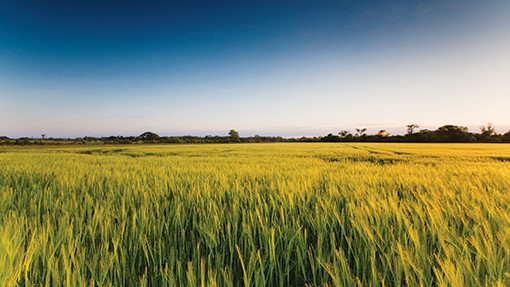Malting barley growers get more fungicide choice

New-generation SDHI fungicide Adexar has been approved for use in malting barley for spring 2014.
The BASF product has been approved for use in barley since its launch in 2012, but maltsters would not accept grain from crops treated with the product.
Now the British Beer and Pub Association (BBPA) has finished its own testing and will allow up to 1 litre/ha of Adexar to be used per barley crop, opening up the malting market to the product.
See also: Whisky boom guides spring barley choice
BASF’s technical product manager Peter Hughes said the main focus of Adexar applications will be at growth stage 31 (T1) in both winter and spring barley, but it can be used around growth stage 45 (T2).
The company recommends a rate of 0.75 litre/ha in low disease pressure, but that should be boosted to 1 litre/ha of Adexar where disease is in abundance.
It has strong activity on all the major barley diseases including rhynchosporium, net blotch, ramularia, brown rust and mildew.
Active ingredients
- Adexar – fluxapyroxad + epoxiconazole
- Imtrex – fluxapyroxad
- Proline – prothioconazole
- Siltra Xpro – bixafen + prothioconazole
The malting barley market has strict quality requirements from the end user, high pressure for growers to meet contracts and, in recent years, uncertainty with weather to contend with.
“Add to that the fact that a number of popular malting varieties are susceptible to the main barley diseases, a new disease-control tool is welcome.
“It’s something growers didn’t have last year,” said Mr Hughes at a recent press briefing.
Barley is the second biggest crop in the UK behind wheat and the fungicide market is dominated by one active ingredient.
About 85% of barley crops receive at least one application of prothioconazole-based sprays to control disease.
In spring barley, 66% of crops receive at least two prothioconazole-based sprays and 47% of winter barley crops.
“These stats aren’t by chance and its reputation has been built on its effectiveness against diseases such as rhynchosporium,” said Mr Hughes.
As Proline (prothioconazole) is also a good protectant T0 product, ADAS fungicide expert Jonathan Blake explained that some could be using the product up to three times in a season.
“That just isn’t good practice from a fungicide resistance point of view, so to have more active ingredients to choose from is a positive,” he said.
Proven product
Mr Blake has been testing the SDHI-triazole product Adexar, along with Imtrex – the straight formulation of Adexar’s active ingredient fluxapyroxad – in the HGCA funded fungicide performance trials and ADAS barley trials since 2010.
Data from the studies show that Adexar is competitive with Bayer CropScience’s SDHI-triazole barley formulation Siltra Xpro on the various barley disease threats.
“We have also shown that the SDHI component in Adexar is adding more to disease control than the equivalent in other barley SDHI formulations,” explained Mr Blake.
He also noted that it was effective in a curative situation when applied late at the T2 application timing for rhychosporium control, helping the crop retain green area.
“There was no significant yield response benefit over Siltra in that situation, although it did have a slight edge and on balance is comparable to the current leading SDHI-triazole mix in barley.”
Steve Dennis, BASF’s southern technical manager, added that extensive trial data had also shown that fluxapyroxad gives barley increased stem strength.

